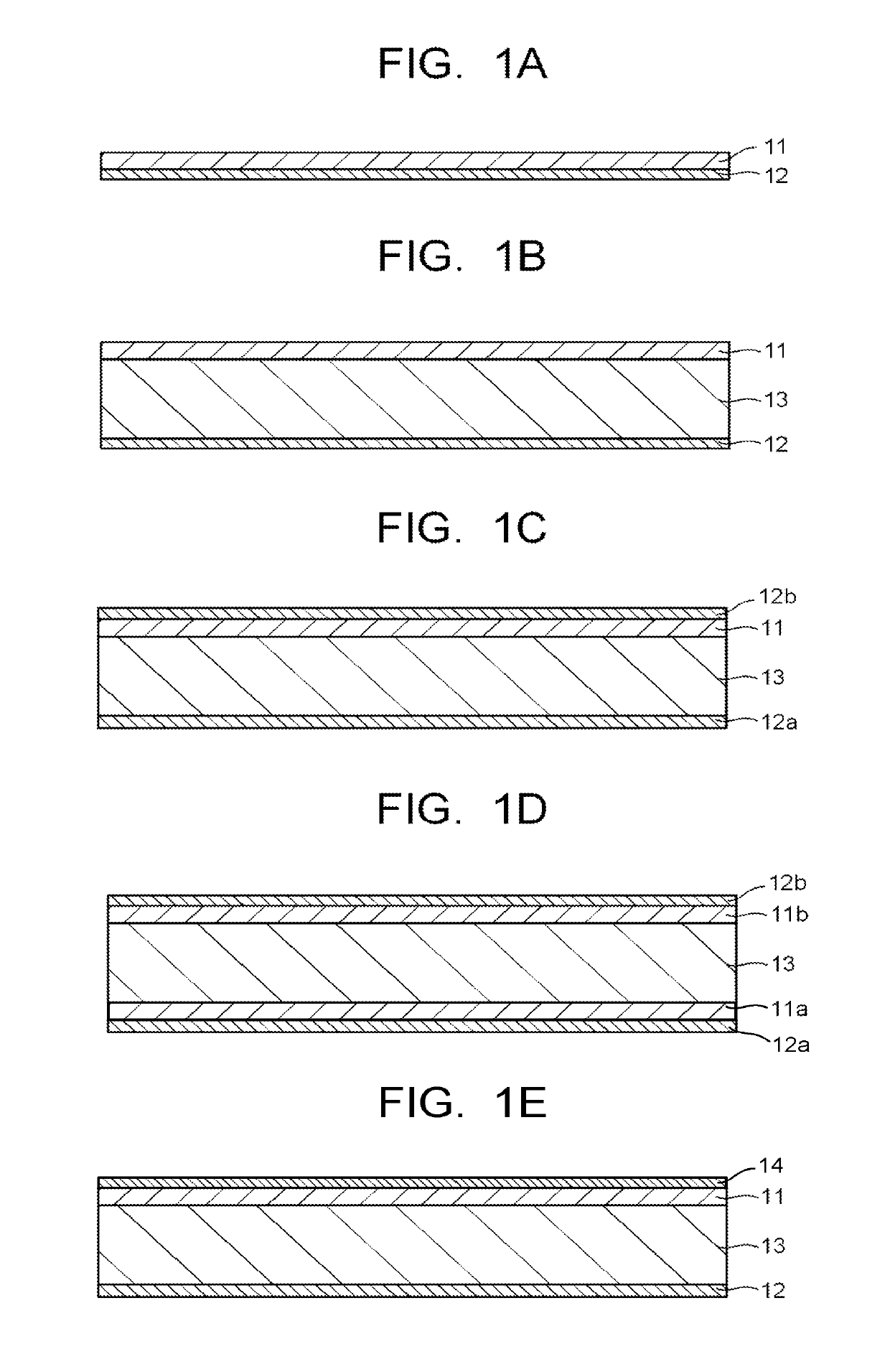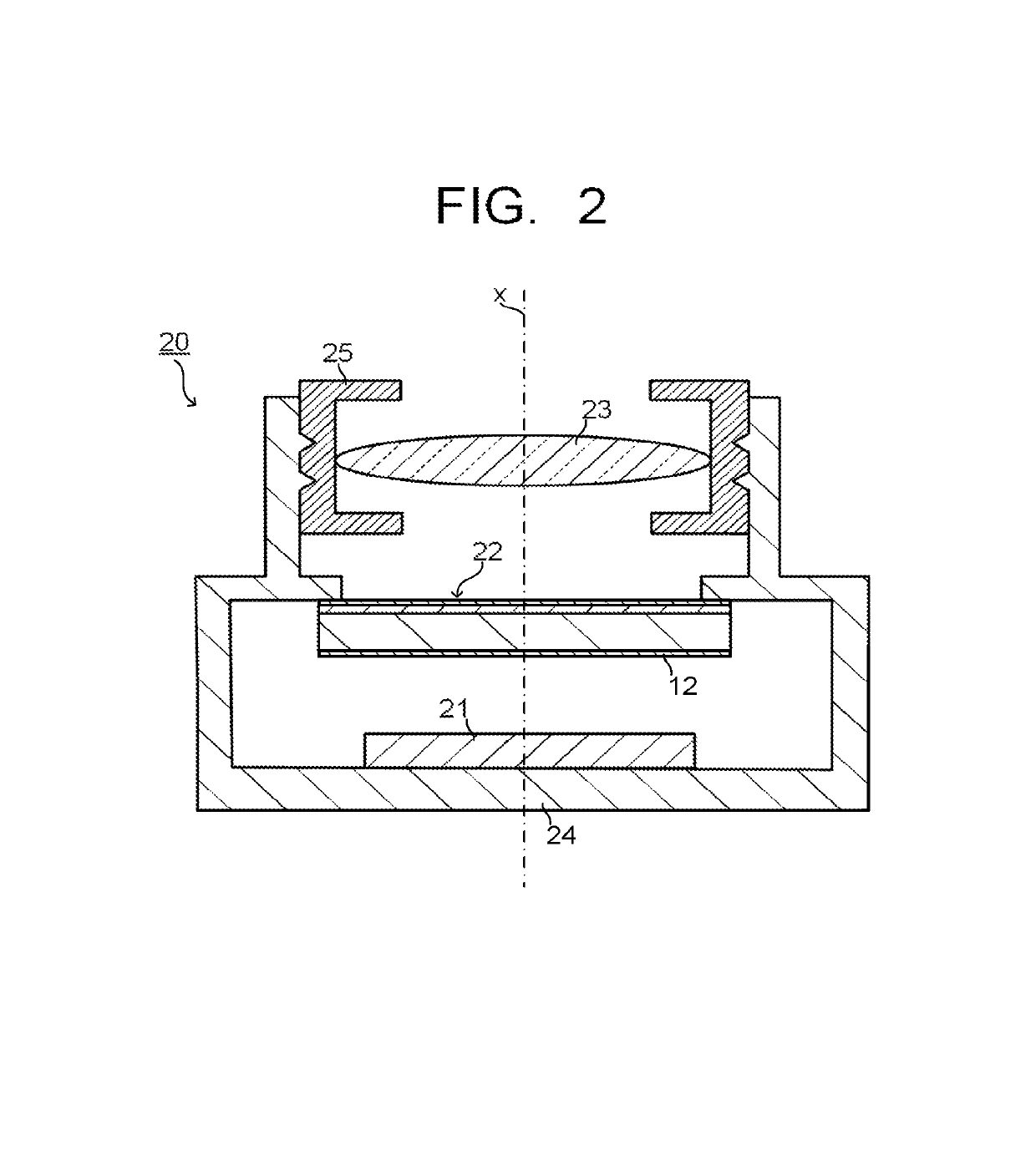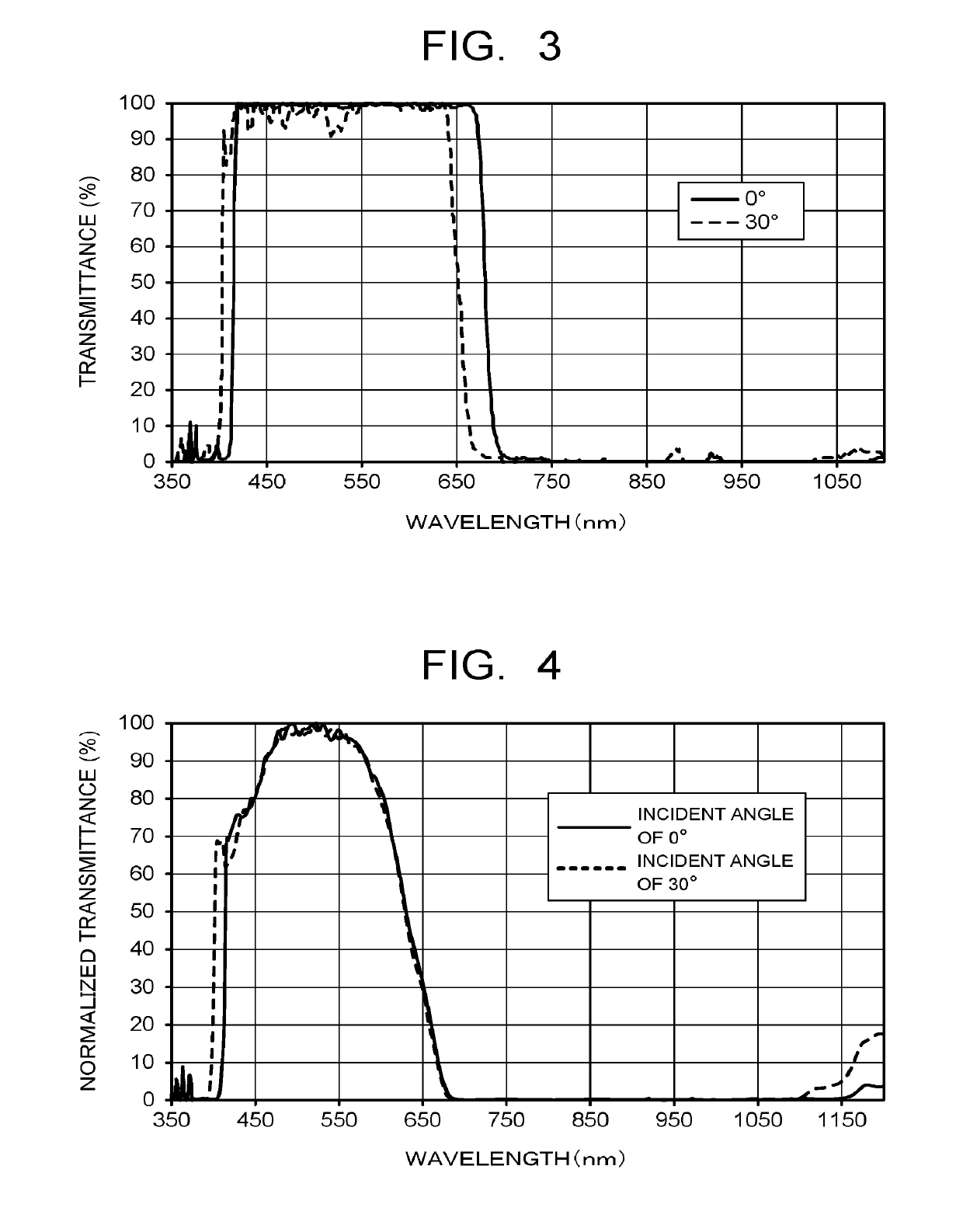Near-infrared cut filter and imaging device
a filter and near-infrared technology, applied in the field of near-infrared cut filters and imaging devices, can solve the problems of different color reproducibility depending on the incident angle, unsolved problems, and inability to obtain color reproducibility particularly of redness with high accuracy, and achieve the effect of small incident angle dependence and excellent color reproducibility
- Summary
- Abstract
- Description
- Claims
- Application Information
AI Technical Summary
Benefits of technology
Problems solved by technology
Method used
Image
Examples
example 1
[0228]On a glass (none-alkali glass; product name: AN100, manufactured by Asahi Glass Co., Ltd.) substrate having a thickness of 0.3 mm, a TiO2 film as a high-refractive index film and an SiO2 film as a low-refractive index film were stacked alternately by a vapor deposition method, thereby forming a reflection layer constituted of an dielectric multilayer film of 52 layers. The structure of the reflection layer was obtained by performing a simulation with the number of stacks of the dielectric multilayer film, a film thickness of the TiO2 film and a film thickness of the SiO2 film being parameters, so that transmittance with a wavelength of 350 to 400 nm is 10% or less, transmittance with a wavelength of 420 to 695 nm is 90% or more, and transmittance with a wavelength of 750 to 1100 nm is 10% or less in the spectral transmittance curve at an incident angle of 0°. FIG. 3 illustrates a spectral transmittance curve (incident angles of 0° and 30°) of a reflection layer produced based ...
examples 2 to 8
[0232]NIR filters were produced similarly to Example 1 while changing the type and / or addition amount of an NIR absorbing dye to be added to the coating liquid for forming the absorption layer as described in Table 3, except that in Example 5 and Example 6 an UV absorbing dye is further added by a ratio described in Table 3 in addition to the NIR absorbing dye.
example 9
[0233]An NIR filter was produced similarly to Example 1 except that the glass substrate was a fluorophosphate glass (product name: NF-50T, 0.25 mm thickness, manufactured by Asahi Glass Co., Ltd.) substrate, and the types and / or addition amounts of a transparent resin, an NIR absorbing dye and a UV absorbing dye used in the coating liquid for forming the absorption layer were set as described in Table 3.
[0234](Spectral Characteristic of the Absorption Layer)
[0235]Separately from the production of the above-described NIR filters, the coating liquid for forming an absorption layer prepared in each of the above examples was applied by a spin coating method on a glass substrate, and then heated under an atmospheric pressure for five minutes at 90° C. and then one hour at 150° C., thereby forming an absorption layer with a thickness of 1 μm.
[0236]The spectral transmittance curve of each absorption layer formed was measured with the atmospheric air being the background by using an ultravi...
PUM
| Property | Measurement | Unit |
|---|---|---|
| incident angle | aaaaa | aaaaa |
| transmittance | aaaaa | aaaaa |
| wavelength range | aaaaa | aaaaa |
Abstract
Description
Claims
Application Information
 Login to View More
Login to View More - R&D
- Intellectual Property
- Life Sciences
- Materials
- Tech Scout
- Unparalleled Data Quality
- Higher Quality Content
- 60% Fewer Hallucinations
Browse by: Latest US Patents, China's latest patents, Technical Efficacy Thesaurus, Application Domain, Technology Topic, Popular Technical Reports.
© 2025 PatSnap. All rights reserved.Legal|Privacy policy|Modern Slavery Act Transparency Statement|Sitemap|About US| Contact US: help@patsnap.com



